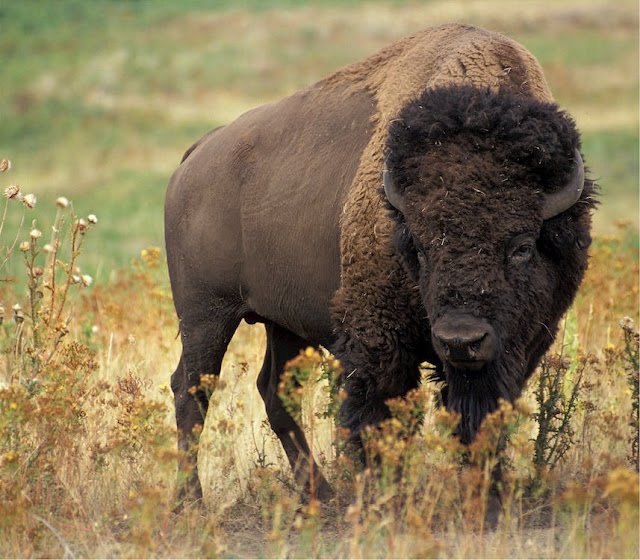Physical Characteristics:
- Adult plains bison are massive mammals, with males (bulls) weighing up to 2,000 pounds (900 kg) and females (cows) weighing around 1,000 pounds (450 kg).
- They have a hump on their shoulders, a shaggy mane of fur around their necks, and a large head with short, curved horns.
- Their fur is dense and can vary in colour from dark brown to nearly black.
Historical Range and Population:
- At one point, plains bison were incredibly abundant across North America, with an estimated population of 30 to 60 million individuals.
- They roamed from the eastern regions of the Rocky Mountains to the eastern seaboard, and from northern Canada down to Mexico.
Decline and Near Extinction:
- The arrival of European settlers in the 18th and 19th centuries led to a dramatic decline in the bison population due to hunting, habitat destruction, and disease transmission from domesticated livestock.
- By the late 1800s, bison numbers had plummeted to just a few hundred individuals, pushing them to the brink of extinction.
Conservation Efforts and Recovery:
- In the late 1800s and early 1900s, conservationists and concerned individuals took action to save the bison from complete extinction.
- Efforts were made to protect and establish bison herds in national parks and reserves, which served as safe havens for the species.
- Through careful management and conservation efforts, the plains bison population gradually began to recover.
Current Status:
- Thanks to conservation efforts, the plains bison population has rebounded from the brink of extinction, and it is estimated that there are now around 350,000 bison in North America.
- Many of these bison live in national parks, wildlife reserves, and private ranches.
Future Prospects:
- The future of plains bison largely depends on ongoing conservation efforts and habitat preservation.
- Bison populations continue to face threats such as habitat loss, competition with livestock, and potential diseases transmitted from domestic cattle.
- Efforts to maintain genetic diversity in bison herds and ensure connectivity between populations are essential to their long-term survival.
Plains bison continue to be an important symbol of North American wildlife and cultural heritage. Their conservation and protection are critical to preserving the ecological balance of grassland ecosystems and maintaining a species that played a significant role in the history and culture of the continent.


No comments:
Post a Comment